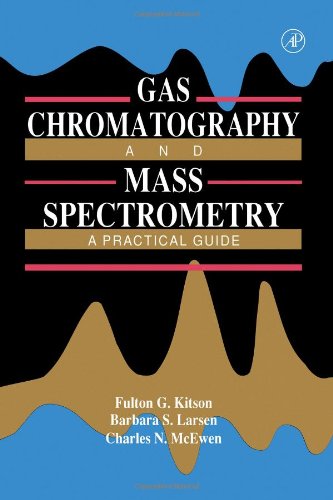Gas Chromatography and Mass Spectrometry: A Practical Guide book download
Par gould diane le mardi, août 30 2016, 21:32 - Lien permanent
Gas Chromatography and Mass Spectrometry: A Practical Guide by Barbara S. Larsen, Charles N. McEwen, Fulton G. Kitson


Gas Chromatography and Mass Spectrometry: A Practical Guide Barbara S. Larsen, Charles N. McEwen, Fulton G. Kitson ebook
Publisher: Academic Press
ISBN: 0124833853,
Page: 192
Format: djvu
It helped classify the Nicotiana family of plants, which is Kew scientists found a way: the technique called thermal desorption–gas chromatography–mass spectrometry (TD GC-MS for short), which produces a graph like the one in the picture - easy to spot the differences between the two plants' compounds, look at the peaks! We were shown a posters of a project that our guide for the day had worked on himself. Updated and expanded, the classic guide to GC/MS helps chromatographers quickly learn to use this technique for analyzing and identifying compounds. Increasing frying temperature led to . Acrylamide content was analysed using gas chromatography-mass spectrometry. GC/MS: A Practical User's Guide. New York: Academic Press; 1996:337. Kitson G, Larsen BS, McEwen CN, editors: Gas chromatography and mass spectrometry: a practical guide. A Homeowner's Guide to Septic Systems:free brochure. "The book should appeal to readers with varying levels of education and emphasises a practical, applied approach to the subject. After explaining the fundamentals, it discusses optimizing, tuning, using, and maintaining GC/MS equipment; explores advances in miniaturized and field-portable 200 and More NMR Experiments: A Practical Course · Introduction to Mass Spectrometry: Instrumentation. Gas Chromatography and Mass Spectrometry: A Practical Guide. (n = 9), statistical significance, * = p < 0.01 (C and E) Fatty acid composition by gas chromatography-mass spectrometry of CON (C) and GLA (E) treated tumours (n = 11), statistical significance, * = p < 0.0001. Flt-1 CON and GLA-treated tumours, semi-quantitative analysis with ImageProPlus. Major constituents in Poropak aerations identified by gas chromatography-mass spectrometry included a-pinene, P-pinene, S3-carene, eucalyptol, p-cymene, a-copaene, terpinene-401, linalool, calmenene, and nonanoic acid. Practical Guide to Metal Detection-Food Industry - Fortress Technology.